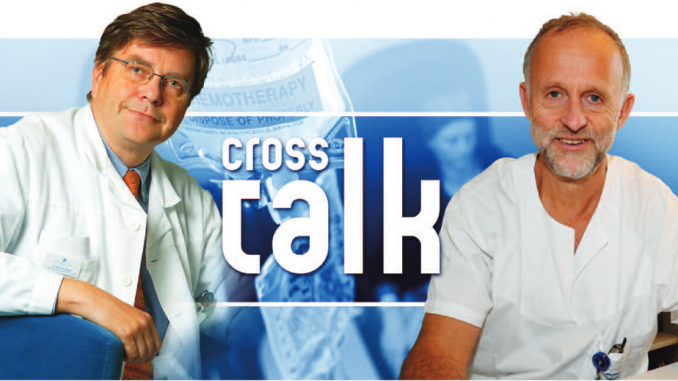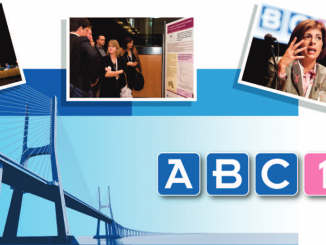
Why are cancer patients being given medically futile treatment in the last weeks of their life? We hear this question raised time and again at international meetings and in journal articles, provoking polarised views and occasional acrimony.
Why are cancer patients being given medically futile treatment in the last weeks of their life? We hear this question raised time and again at international meetings and in journal articles, provoking polarised views and occasional acrimony.
A recent editorial in the Annals of Oncology (2011, 22:2345–48) posed the question: “Why are we not ceasing chemotherapy when it is useless, toxic, logistically complex and expensive?” It drew attention to studies showing marked global variations in approach between countries, with as few as 8% of patients in England receiving chemotherapy in the last month of life, compared with 37% in Portugal. And it commented that “Medical oncologists have overly optimistic predictions and, sometimes excessive, treatment-prone attitudes.”
Is this a fair point? Are too many patients being offered aggressive treatments with unpleasant side-effects when palliative approaches would be the better option for their remaining days? Is the quest for new life-prolonging treatments over- riding the best interests of individual patients?
Cancer World’s Simon Crompton asked two experts – one a medical oncologist, the other a palliative care specialist – to debate the issue, and see if they could agree on a way forward.
Stein Kaasa
 Palliative care expert and head of the Cancer Clinic at Trondheim University Hospital, Norway
Palliative care expert and head of the Cancer Clinic at Trondheim University Hospital, Norway
It has been said that the intensity of cancer treatment may be related to culture, and this is backed by data that seems to indicate that culture influences the use of chemo-therapy during the last two to four weeks of a patient’s life. I believe this data needs to be evaluated and debated.
We can identify different cultural approaches to treating patients nearing the end of their life in different societies. Some medical oncologists offer end of life chemotherapy to as many as 15% – even up to 50% – of dying patients. Not all medical oncologists working within the same cultural setting will take the same approach, and the proportion of patients given futile treatment may vary between institutions and even within large institutions. Societies need to assess the cultural approach governing decisions about when to stop active treatment, from an ethical, clinical, practical and economic point of view, because the treatment being offered to patients is futile.
One factor may be that we do not have good enough indicators to select the right treatment for patients during the last three to six months of life. Improvements might be achieved by research focused on unselected cohorts of cancer patients during this part of their disease trajectory. Here oncology and palliative care would need to collaborate closely.
Matti Aapro
 Medical oncologist and director of the Multidisciplinary Oncology Institute at the Clinique de Genolier in Genolier, Switzerland
Medical oncologist and director of the Multidisciplinary Oncology Institute at the Clinique de Genolier in Genolier, Switzerland
It’s well known that there are variations in treatments and the way certain situations are handled in different countries, but I have my doubts about generalising from such international comparisons, which are based on very diverse studies.
While it is true that attitudes may differ, it is not only the oncologist who dictates what happens – the attitude of the patient and their family is also crucial, and this may vary from country to country. I think the idea that medical oncologists are pressing ahead with treatments to the last minute in the full knowledge that they are futile is false. It is not always easy to determine what a ‘futile’ treatment is, or indeed when a patient will be ‘at end of life’. In some cases we observe a rapid and surprising deterioration in the patient’s status over days or a few weeks, often after a period when the disease has been progressing slowly with the patient remaining very fit. Is it ‘futile’ to try to find a new treatment for such patients?
If so, we should give up on treating endocrine-responsive breast or prostate cancer when it progresses following the first endocrine treatment. And we should not treat colon cancer that progresses beyond the first line of chemotherapy. And what about disease which may possibly be refractory to chemotherapy, as dramatically illustrated in the Annals of Oncology editorial? We know, for example, that many patients with non-small-cell lung cancer who have a poor performance status will not benefit from chemotherapy. But is that a sufficient reason to deny them a chance? The poor performance status may not be indicative of a major refractory tumour burden, and adequate support can help these patients survive longer, as was shown in a paper by Temel et al. (NEJM 2010, 363:733–742)
Oncologists recommend treatment in the full belief that it will bring positive results to the patient. It may not work out that way in practice, and may ultimately prove ‘futile’, but it is often impossible to know in advance.
One also has to accept that futility, while a statistical term, is not perceived in the same way by everyone. The distinction between treatment and palliative approaches can be false. Cancer treatments can also palliate pain, for example, even when they are not active against the disease. If you go through the literature on infused 5-FU chemotherapy, it is clear that in many patients the treatment reduces pain – an effect that might otherwise be achieved only with medicines that are less well tolerated. There are many other examples where treating the tumour reduces pain and other symptoms.
 This isn’t just about medical oncologists. Two other groups, in particular, are drivers in this issue, and the way in which they influence what happens to patients towards the end of life should be assessed by themselves and by society.
This isn’t just about medical oncologists. Two other groups, in particular, are drivers in this issue, and the way in which they influence what happens to patients towards the end of life should be assessed by themselves and by society.
First, there is the pharmaceutical industry, which sells very expensive drugs to the patients via media advertising, talking about new ‘breakthroughs’. These heavily marketed drugs have a marginal impact, if any, on patients who are in their last weeks and months of life, even though they might have remarkable effects when given to the right patient at earlier stages.
Second, there are the basic scientists who, via clever media coverage, create the impression that personalised treatment with new drugs and technologies will soon revolutionise cancer care. Theoretically they may be right, but there is a long way to go before we see a major influence on care for patients during the last three to six months of life, and systematic, large-scale clinical research on the use of these treatments in this setting is needed. Until then, the greatest potential to improve decision making about end of life care will come from more extensive and systematic use of good clinical indicators, including patient self-assessment of function, symptoms and psychological factors.
It is true that personalised treatments generally have fewer side-effects than chemotherapy, and bring good response rates and life prolongation to the right patients when used early in a non-curative disease trajectory. But there is an argument that patients are being encouraged to use these medicines for too long. Patients find it very hard to know what is best for them as their illness progresses, and I believe that medical oncologists need to be more careful than ever in making these decisions towards the end of life. It is very important that we raise the profile of this issue.
 Industry is always blamed, but I am not sure that is fair. Poor journalism can certainly be at fault – which is why encouraging higher standards in reporting is so important. No one can deny that some recent developments in cancer drugs are of great value. But it is also true that statistically significant survival benefit of only a few days is of no clinical value.
Industry is always blamed, but I am not sure that is fair. Poor journalism can certainly be at fault – which is why encouraging higher standards in reporting is so important. No one can deny that some recent developments in cancer drugs are of great value. But it is also true that statistically significant survival benefit of only a few days is of no clinical value.
As for the basic scientists’ proclamations about revolutionary personalised treatments, it may well be that some scientists are “clever” in promoting themselves. But what about those clever drugs: imatinib, rituximab, trastuzumab, everolimus and others? Might not the new tools available today allow significant progress to be made in the individualised approach? It took years for some oncologists to accept that patients with endocrine-responsive breast cancer would derive little or no benefit from standard chemotherapy. Maybe the new tools will show which patients with non-endocrine responsive cancers will benefit from one or another drug class, beyond the classic determination of a HER-2 receptor for breast and some other tumours.
 Oncologists want to offer optimal treatment for their patients, but they are subject to the pressure of marketing from industry, and at the moment I think the balance is wrong. There is no doubt that what physicians communicate, and how they do it, has a major influence on the decisions patients and their families take when approaching the end of life. We need a greater sense of realism applied to these decisions.
Oncologists want to offer optimal treatment for their patients, but they are subject to the pressure of marketing from industry, and at the moment I think the balance is wrong. There is no doubt that what physicians communicate, and how they do it, has a major influence on the decisions patients and their families take when approaching the end of life. We need a greater sense of realism applied to these decisions.
I think we need to go back to the individual patient, and ask ourselves who would really benefit from receiving this treatment. If you look at the inclusion criteria in the relevant clinical studies, most patients will have had a good physical performance status. So if a person’s performance status starts to drop and/or their subjective symptoms increase, we should consider stopping treatment.
I believe you have to follow the patient – not just by their CT scans, but by following their symptom patterns and their physical and psychological performance patterns over time. I’m not sure that medical oncologists are doing that systematically, or documenting it, at all stages of the cancer.
 Rather than stigmatising the physicians and the treating teams, we need to open a frank dialogue about the limits of our understanding of the true value of different treatments, for different diseases and in different clinical situations. I believe the most important thing is to offer continuous care to the patient, from the start to the end of their cancer journey – and even after the end, in supporting family and friends. I think that dividing cancer care into ‘active’ and ‘palliative’ is wrong.
Rather than stigmatising the physicians and the treating teams, we need to open a frank dialogue about the limits of our understanding of the true value of different treatments, for different diseases and in different clinical situations. I believe the most important thing is to offer continuous care to the patient, from the start to the end of their cancer journey – and even after the end, in supporting family and friends. I think that dividing cancer care into ‘active’ and ‘palliative’ is wrong.
In an editorial just published in the Annals of Oncology (23:1932–34), I discuss the importance of continuity and of supportive care, which should include the needs of terminally ill patients. We should not differentiate supportive and palliative care from active treatment. Good cancer care is a continuum, and sending the patient to a ‘death home’ is not ideal.
 I agree with Matti that we should not look at palliative care as a separate system from active treatment. I also agree we should not stigmatise physicians, but instead have an open discussion about these issues. The expertise of palliative care and symptom management should be continuously integrated with tumour-directed treatment. It’s about offering the correct treatment at the right time, and patients have to understand that they are part of a large team including medical and radiation oncologists, palliative care physicians, specialist nurses, community nurses and so on. As patients approach the end of their life, this team will change and the focus will be more on home care than hospital care. Oncology expertise is also needed in home care situations and within palliative care teams.
I agree with Matti that we should not look at palliative care as a separate system from active treatment. I also agree we should not stigmatise physicians, but instead have an open discussion about these issues. The expertise of palliative care and symptom management should be continuously integrated with tumour-directed treatment. It’s about offering the correct treatment at the right time, and patients have to understand that they are part of a large team including medical and radiation oncologists, palliative care physicians, specialist nurses, community nurses and so on. As patients approach the end of their life, this team will change and the focus will be more on home care than hospital care. Oncology expertise is also needed in home care situations and within palliative care teams.
 High-quality and continuing supportive care, as recommended by the European Society for Medical Oncology and other medical organisations, is definitely of primary importance. It could be that in some countries, and in some settings, oncologists are led too much by test results, rather than thinking about the real benefits to patients of offering approaches that integrate the best active treatment with the best supportive care. If that is the case, there needs to be a change.
High-quality and continuing supportive care, as recommended by the European Society for Medical Oncology and other medical organisations, is definitely of primary importance. It could be that in some countries, and in some settings, oncologists are led too much by test results, rather than thinking about the real benefits to patients of offering approaches that integrate the best active treatment with the best supportive care. If that is the case, there needs to be a change.





